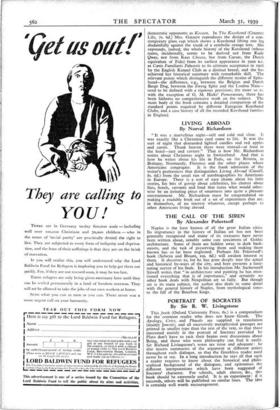THE DUTCH BARGE DOG By Alice Gatacre
The Keeshond, Wolf Spitz, Grand Loulou—or even Over- weight Pomeranian, if you would prefer the name used by Queen Victoria for her champion Windsor Marco—first made its mark when, towards the end of the eighteenth centurY, supporters of William of Orange branded their nationalist, democratic opponents as Keezen. In The Keeshond (Country Life, 7s. 6d.) Mrs. Gatacre reproduces the design of a con- temporary glass cup which shows a Keeshond lifting one leg disdainfully against the trunk of a symbolic orange tree. She expounds, indeed, the whole history of the Keeshond (whose name, incidentally, seems to be derived not from Kade Quay, nor from Kaas Cheese, but from Caesar, the Dutch equivalent of Fido) from its earliest appearance in 5000 B.C. as Canis Familiaris Palustris to its ultimate acceptance in x926 by the English Kennel Club as a distinct breed; and she has achieved her historical summary with remarkable skill. The relevant points which distinguish the different strains of Spitz- hund—the difference, e.g., between the Belgian and Dutch Barge Dog, between the Zwerg Spitz and the Loulou Nain- need to be defined with a rigorous precision; the more so as, with the exception of G. M. Hicks' Pomeranian, there has been hitherto no comprehensive work on the subject. The main body of the book contains a detailed comparison of the standard points required by different European Keeshond Clubs, and a case history of all the recorded Keeshond families in England.



































































 Previous page
Previous page